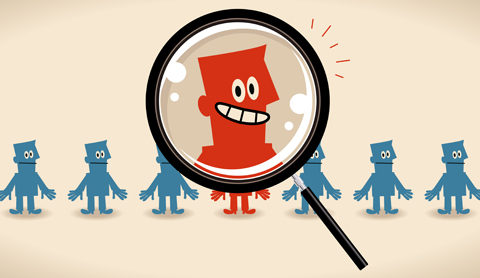It struck me when I was looking at the different types of fresh pasta. I just thought I’d finished shopping, when I remembered that they have fresh pasta at my favourite supermarket, so, I returned through the aisles to get to the fridge where they store the pasta. I walked all the way back from the front of the supermarket, where I had just picked the grated cheese to put on top of my meal, until I reached the fridge. And there it struck me. I had been collaborating in research for the past 2 years, without even realising it. Extremely valuable research, on large sample sizes, that can easily make the link between segments of shoppers, purchase behaviour and the nearly exact way people navigate through the aisles. Time of day, included. Ticket price, included. With some imagination, even the in-store communication and whether or not the shopper encountered this on his path to purchase could be included in the data.
All of that, and it made my life more convenient at the very day they rolled this out. What happened, you ask? A couple of years ago, my favourite supermarket (it’s called Delhaize by the way) introduced something that makes the checkout experience much more convenient for both them and shoppers:
When you enter the supermarket, you scan your loyalty card and a machine appoints you a handheld device, about the size of a can of coke (exact time of entering the supermarket: logged. All socio-demographic data and purchase history: on the loyalty card). With that device, you scan every product you intend to buy. Every single product that you pick up on your way through the aisles gets scanned before you proceed to the checkout. (All the products you buy: logged. The exact path you take while walking through your supermarket: easily derived from the order in which you have scanned your products). You are encouraged to scan everything, because at the checkout, you have to pass by a nice lady that receives your payment. Every now and then, at random (but often enough to make it scary), you get checked. They check whether you scanned every product, and look at you with a very indignant face if you forgot something. It happened to me once … in any case, you walk through the aisles, scanning everything, piling up data.
Now for me, that is a dataset I’d love to get my hands on. It sure beats asking 100 people to use their smartphone to document everything they do in the supermarket. But anyway, it’s not the beauty of the dataset that I wanted to talk about here. It’s a more profound idea that we all too often forget in market research: giving value before getting value.
In your average research project, respondents are asked to do a lot of stuff. Filling out questionnaires, sitting in focus groups. In many cases we give them value in 2 ways; either we pay them, or we suppose they are very much intrinsically motivated to give feedback to our client. And we hope we don’t lose them throughout our research, when one of the motivational sources has been depleted. The self-scanning mechanism of Delhaize will never lose me. Never. It just made my life much better than before. It helps me avoiding long waiting lines at the checkout, and that’s valuable for me, and for them. And every single time I participate in their research project, I have the same feeling: Delhaize cares about my shopping experience. Thank you, Delhaize, for making my life so much easier. Now how many of our respondents finish a research project of any kind, and have this feeling? Not enough, that’s how many. Time to think value. Time to think: how can I make people’s lives easier, and get data from them at the same time? If you have any bright ideas, let me know at @eliasveris!
 Elias Veris is a Senior R&D Consultant at InSites Consulting
Elias Veris is a Senior R&D Consultant at InSites Consulting



1 comment
[…] self shopping in his favorite supermarket and what market research can learn from that. Here at RWconnect! Tweet Warning: printf(): Too few arguments in […]